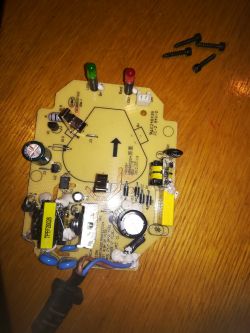Hello Dear Forum Members.
Somehow I was able to connect the battery to charge from another device.
The charger does not charge from now. The voltage from the transformer through the bridge reaches the circuit on the board - all elements are surface mounted. Signaling diodes and charging signs are not lit.
The main elements that I was able to read are: LM 358 (smd) and LD 1117A (smd). Markings are very poorly visible, so someone may need this information.
What could be causing the fault? If it is LD1117A (I don't know how to check if it is functional) can it be replaced with LM1117?
Please help.
Best regards ..... .
Somehow I was able to connect the battery to charge from another device.
The charger does not charge from now. The voltage from the transformer through the bridge reaches the circuit on the board - all elements are surface mounted. Signaling diodes and charging signs are not lit.
The main elements that I was able to read are: LM 358 (smd) and LD 1117A (smd). Markings are very poorly visible, so someone may need this information.
What could be causing the fault? If it is LD1117A (I don't know how to check if it is functional) can it be replaced with LM1117?
Please help.
Best regards ..... .



